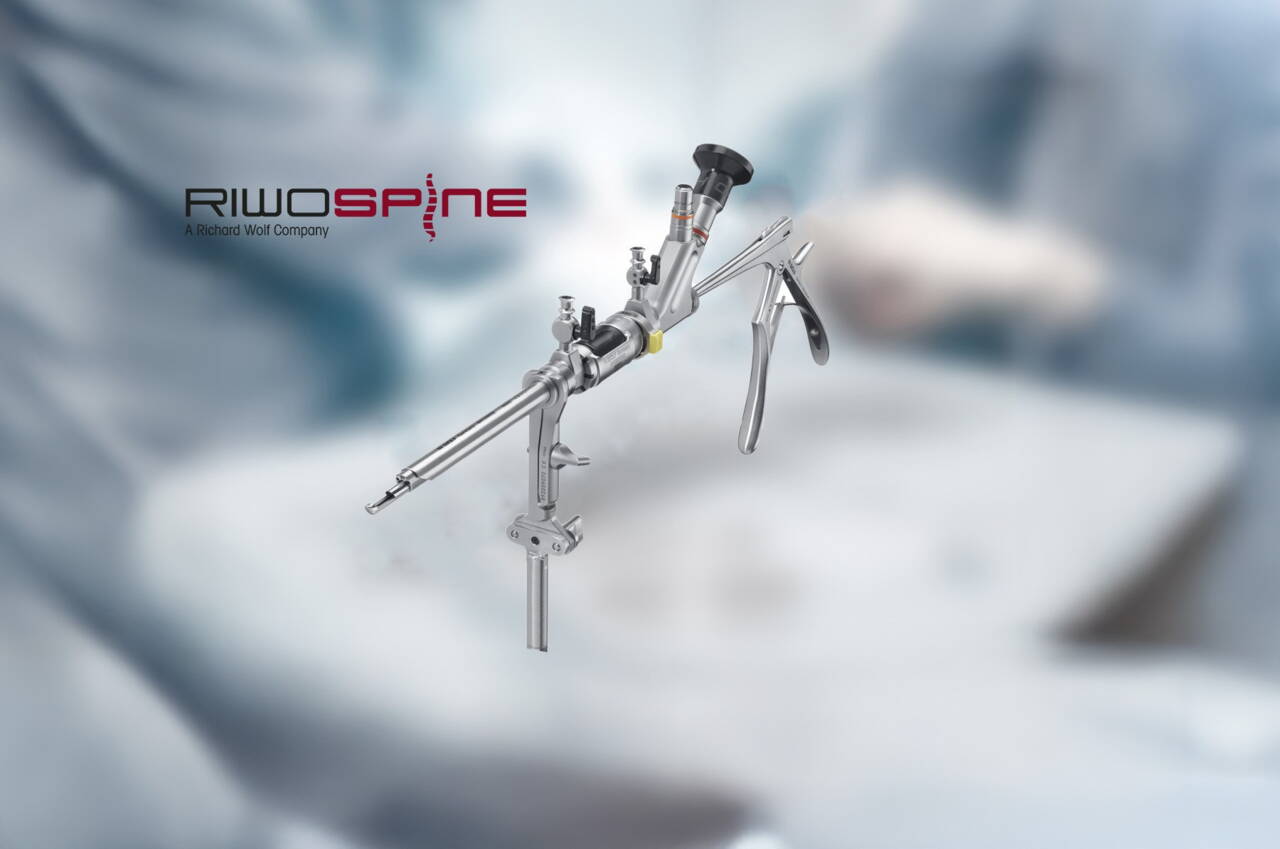RIWOspine - VERTEBRIS lumbar
Takes the pressure off
Together with experienced spinal surgeons, Richard Wolf was the first company to develop a standardised procedure for the full-endoscopic decompression of lumbar spinal stenosis, thereby setting another milestone.
The more extensive bone and / or ligament resection required for this operation necessitated larger optics with a corresponding intraendoscopic working channel as well as larger and stronger instruments. The VERTEBRIS stenosis instrument set is completed with the universal PowerDrive ART 1 motor system and a range of rigid and angled reamers.
Interlaminar technique
In interlaminar surgery, the spinal canal is accessed via the interlaminar window from the posterior. The dilator is guided directly to the ligamentum flavum with a puncture cannula without prior puncture. After placing the working sheath over the dilator, the operation is performed through the high-resolution discoscope under continuous fluid irrigation. The functionality of the components of the access system and the instruments are precisely harmonised. It is even possible to pass through the ligamentum flavum and the nerve root with minimal traumatisation.
Bone sections can be effectively resected from spinal stenoses under full endoscopic view using special manual instruments and a large number of available high-speed cutters.
VERTEBRIS stenosis
High-resolution discoscopes with adapted working length and increased irrigation capacity for full-endoscopic interlaminar access.
Endoscope adapter for regulating the distance between the endoscope and working sleeve for more ergonomic working.
Optimised ratio of large working channel (5.6 mm) and outer diameter (10 mm) for minimal access trauma and highly effective operation.
Optimised fluid management through optimisation of inflow and outflow - prevention of compression of neural structures through high pressures of the irrigation fluid.
Working sleeves with atraumatic distal design to protect neural structures.
Stable grasping forceps and punches for effective soft tissue and bone resection with overload protection
Endoscopic high-speed milling system with reusable and disposable tools for mechanical bone and soft tissue resection for lateral recess stenosis.
TipControl instruments for 4 MHz radiofrequency coagulation and ablation.
Radiofrequency surgery system
Ipsilateral decompression
After the access has been created, the bony structures are exposed. It is necessary to begin decompression at the caudal end of the descending facet. Depending on the pathology, decompression then begins with the resection of parts of the medial descending facet, the cranial and caudal lamina and the ligamentum flavum. The extent of the decompression generally continues cranially at least to the tip of the ascending facet and caudally to half of the pedicle. The medial parts of the ascending facet and the ligamentum flavum are then resected until sufficient decompression of the neural structures - cranial, caudal and lateral - is clearly recognisable. In the case of a central stenosis, the ligamentum flavum must generally be resected medially to the midline. If necessary, protruding ring parts and osteophytes in the ventral epidural space can also be removed.
Contralateral decompression using the ‘over-the-top’ technique
If bilateral symptoms occur in the case of a central stenosis, a unilateral approach is performed using the ‘over-the-top’ technique to the opposite side. For this purpose, the bone in the ventral area of the spinous process is resected until the contralateral side is accessible dorsally up to the dura of the spinal cord. If possible, the ligamentum flavum is initially left in place to protect the dura and bony decompression is again performed by laminotomy and partial factectomy. The ligamentum flavum is then completely resected. Finally, the contralateral recess must be lengthened. Decompression is complete when the dura and the spinal nerves are clearly decompressed.
Extensive and uninterrupted excessive retraction of the neural structures with the working sleeve in a medial direction must be avoided, especially in cranial areas, or only performed intermittently to avoid the risk of neurological damage.
In order to achieve safe and reproducible results, Stöckli Medical offers a state-of-the-art training programme for medical professionals, which can be conducted at one of our many training facilities or even at your clinic. These options range from symposia, general courses, case discussions, specific cadaver labs to specially tailored programmes.

